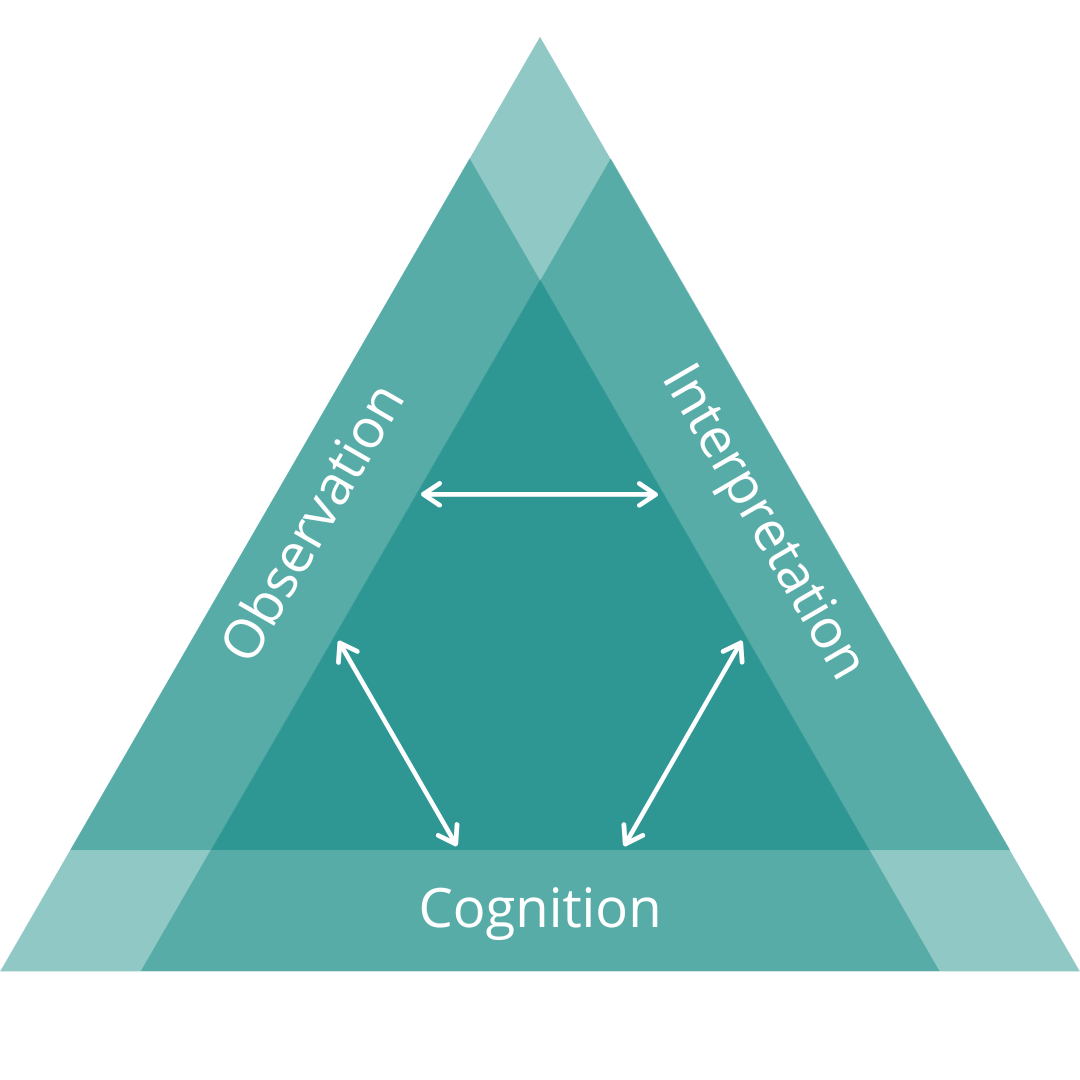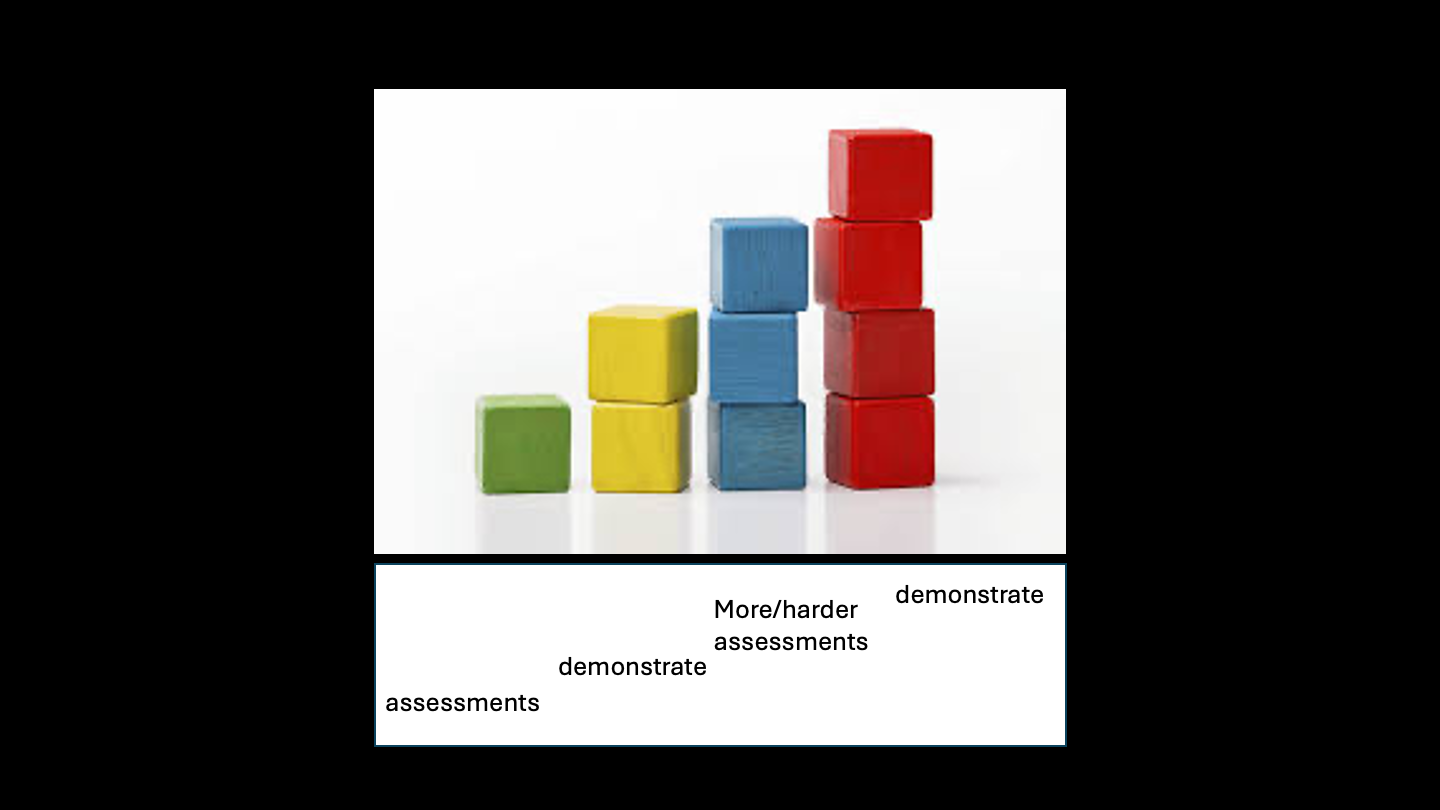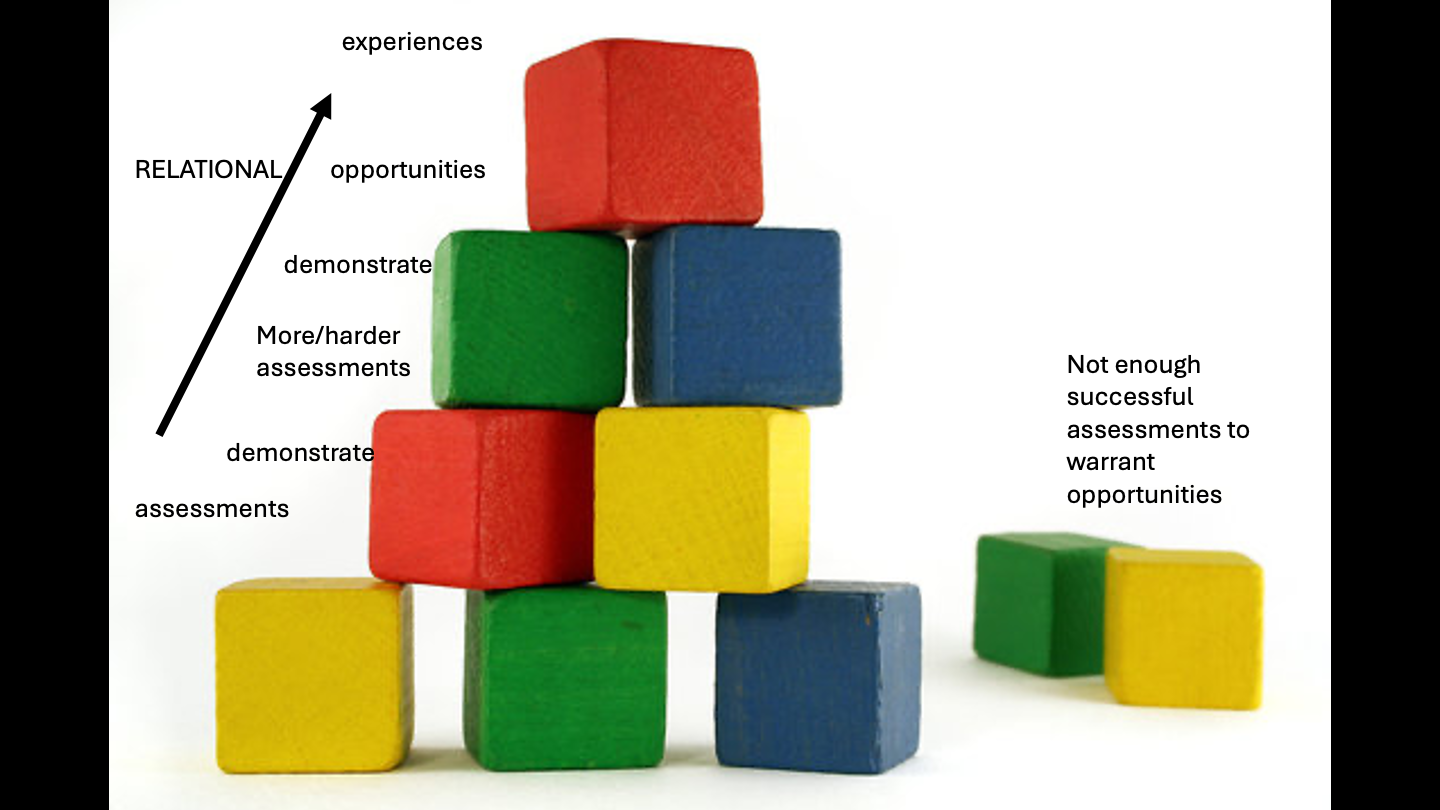%%{init: {'theme':'dark'}}%%
flowchart TD
A["Technology-Integrated Assessment"]
subgraph subgraph_2rvu6wpa7["First Order Factors"]
B("Assessment Purpose")
C("Duty of Care")
D("Technology Acceptance")
E("Assessment Design")
end
subgraph subgraph_p3azrijwm["Second Order Factors"]
F(["Assessment of Learning"])
G(["Assessment for Learning"])
H(["Assessment as Learning"])
I(["Bias"])
J(["Inclusion"])
K(["Relationships"])
L(["Ethical EdTech"])
M(["Performance Expectancy"])
N(["Effort Expectancy"])
O(["Social Influence"])
P(["Facilitating Conditions"])
Q(["Measurement Theory"])
R(["Academic Integrity"])
S(["Relevance"])
T(["Reciprocity"])
end
A --- B & C & D & E
B --- F
F --- G
G --- H
C --- I
I --- J
J --- K
K --- L
D --- M
M --- N
N --- O
O --- P
E --- Q
Q --- R
R --- S
S --- T
B:::purpose
C:::duty
D:::accept
E:::design
F:::purpose
G:::purpose
H:::purpose
I:::duty
J:::duty
K:::duty
L:::duty
M:::accept
N:::accept
O:::accept
P:::accept
Q:::design
R:::design
S:::design
T:::design
classDef purpose fill:#440154,color:#fff,stroke:#440154,stroke-width:4px
classDef duty fill:#3B528B,color:#fff,stroke:#3B528B,stroke-width:4px
classDef accept fill:#21918c,color:#fff,stroke:#21918c,stroke-width:4px
classDef design fill:#5EC962,color:#000,stroke:#5EC962,stroke-width:4px
style subgraph_2rvu6wpa7 fill:#BBDEFB
style subgraph_p3azrijwm fill:#C8E6C9
Assessment for Equity
Colin Madland & Jess Mitchell
University of Victoria & Ontario College of Art and Design University
2025-06-05
Preliminaries
- have a syllabus you are willing to share at the ready
- trust is essential
- community is essential
- criticize the system, not the people
https://cmad.land
- click ‘Slides’
Folks, we have a problem!
Theoretical Foundation

Assessment Triangle
Philosophical Foundation
Jess’ Story



Who is a Designer?
%%{init: {'theme':'dark'}}%%
flowchart LR
A[Do you make decisions?] ---> B((YES!)) ---> C{You're a Designer!}
What is your tolerance for the FALSE POSITIVE?
Are you more concerned with Billy than you are with the FALSE NEGATIVE?
If we cannot have a perfect predictor, what is the error rate that we will tolerate?
Who is accountable?
Who is responsible?
Where does the buck stop?
What is YOUR moral responsibility?
power asymmetries
racial dynamics
mental health considerations
and other challenges
When do we apply ethics?
What you measure is what you value
# of logins
Time of submission
“success” / absence of failure
Completion
“diversity”
Who do the rules limit?
- We all are limited by rules
- No exceptions
- You must report on your department’s success using these measures
- Only English speakers can learn from this material
- Only graduate students can take this course
- Your thoughts must be organized in a 5 paragraph essay
- You cannot use Wikipedia as a reference
Practicalities
What does traditional grading hide?
Colin’s Story
| student | Mean |
|---|---|
| Student1 | 75 |
| Student2 | 75 |
| Student3 | 75 |
| Student4 | 75 |
| student | assign.1 | assign.2 | assign.3 | exam |
|---|---|---|---|---|
| Student1 | 75 | 75 | 75 | 75 |
| Student2 | 25 | 75 | 100 | 100 |
| Student3 | 100 | 100 | 75 | 25 |
| Student4 | 0 | 100 | 100 | 100 |
Remember ‘Duty of Care’
- Bias
- Inclusion
- Relationships
- Ethical EdTech
4 Pillars of Grading
- Clear objectives - what are your objectives? Who designed them?
- Helpful and actionable feedback in the context of a relationship
- ‘Marks’ indicate progress
- ‘Late’ submission/resubmission/reassessment without penalty
Can we begin a community of practice today?
cmadland@uvic.ca | jmitchell@ocadu.ca